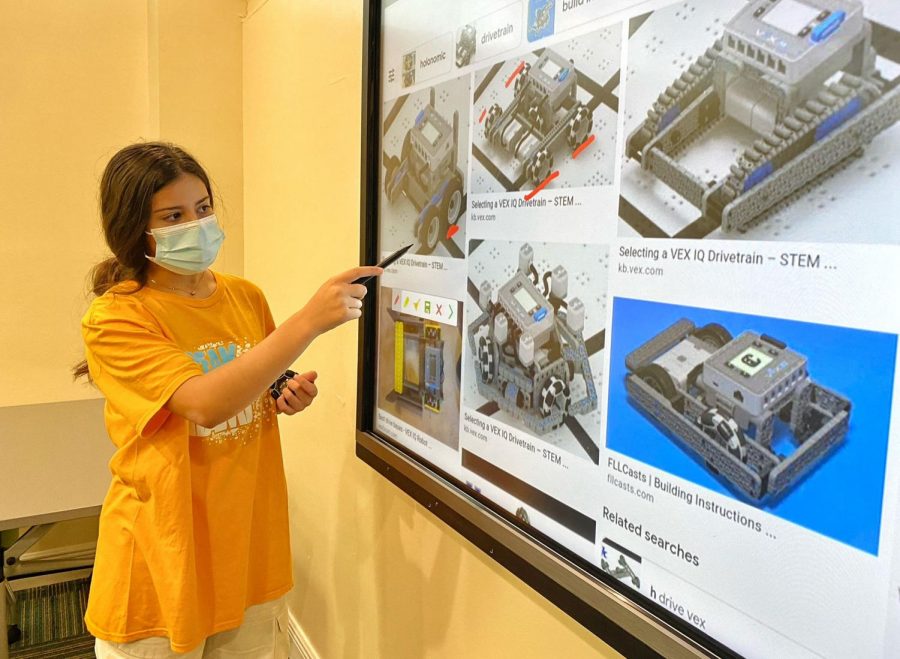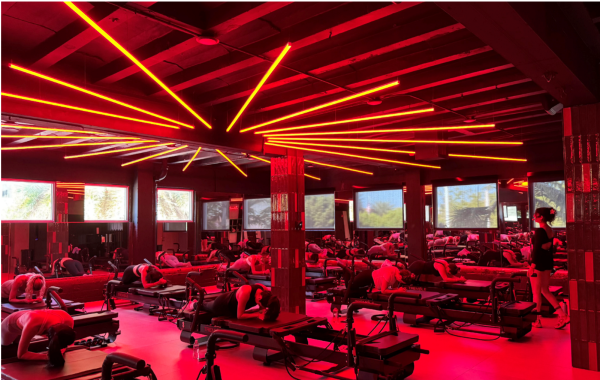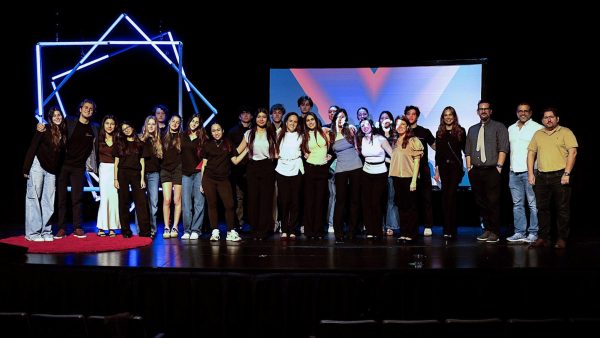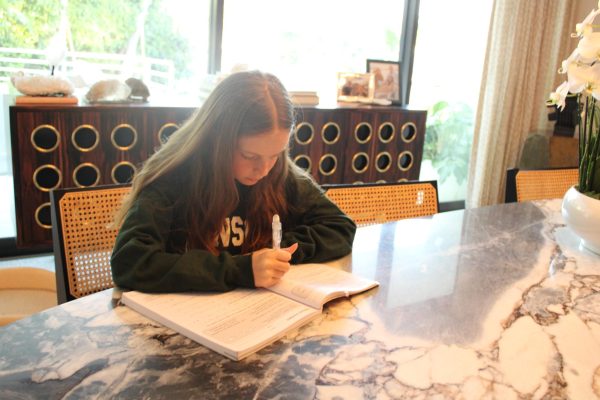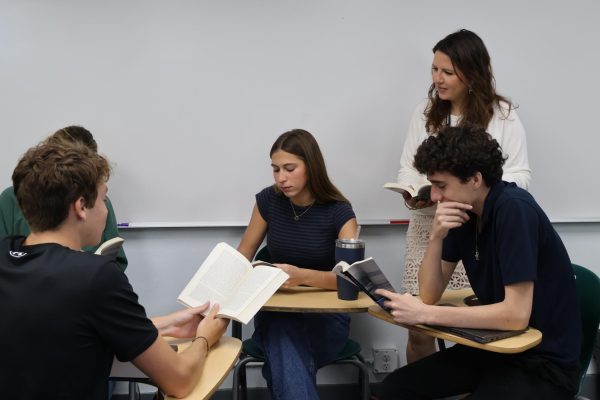Breakthrough Miami celebrates 30 years of service and success
Courtesy of Mr. Webber Charles
Sofia Paraoulaki de Miranda ’23 leads Breakthrough scholars in a science elective.
What do Saturday mornings look like at the Ransom Everglades Middle School? A characteristic humidity, hues of blue and green streaked across the walls and the sky, and over 150 students collaborating and learning from schools across the city. These kids, and the high school volunteers who accompany them, all take part in a program called Breakthrough Miami, an academic enrichment program for under-resourced fifth- through 12th-graders that just celebrated its 30th year of existence.
In 1989, Breakthrough Miami’s story began. Mr. Joe Mauro, a history teacher at RE, read about the San Francisco-based Summerbirdge program in Independent School Magazine and proposed exploring the possibility of creating something like it to former RE Head of School Frank Hogan. In a letter to Hogan dated October 10, 1989, Mauro wrote, “I think a program like this could hold great potential and promise for Ransom Everglades,” adding that the implementation of a program like Summerbridge could, among other things, “give us a vehicle to do something tangible for our community” and “provide our high school students with a tremendous educational and service experience.”
After the exchange, Mr. Mauro traveled out to the University School of San Francisco with former Assistant Head of School Mr. Jerry Zank. Following their investigation in California, the program was proposed to the Board of Trustees and approved under the leadership of alumnus Mr. John Flickinger II ’74.
Flash forward two years, to 1991, and Ransom Everglades established their own version of Summerbridge (later renamed Breakthrough). Mr. Paul Natland ’02, now a Physics teacher at RE, began taking part in the program as a scholar in 1996.
When asked about his initial development through Breakthrough, Mr. Natland explained, “I would say I was a little shyer at first. Through this program—with all this excitement about education and skits and stuff—I came out of my shell a little bit more.”
Mr. Natland credits his studies at Breakthrough for eventually leading him to develop an interest in higher-level math courses, as well as motivating him to apply to Ransom Everglades for his high school education. “I wouldn’t have applied to Ransom for high school if it wasn’t for Breakthrough,” he said.
After participating in Breakthrough while in middle school, Mr. Natland increased his involvement with the program in several ways. “Because … it had had such a big impact on me, I became a volunteer,” he said. “I was a teaching assistant and then became a teacher in the program. And then I started to become a mentor teacher to the teachers in the program. I do the training for teachers who are in the program sometimes, during the summer. I’ve basically been involved in this program for over 20 years.”
From Mr. Natland’s perspective, “teaching and mentoring in Breakthrough, those are the things that make me a better teacher, more than anything else.”
Breakthrough is based on a student-teaching-students model, and it involves scholars from fifth to twelfth grade. Entrance into the program is highly competitive through both an application and an interview. Furthermore, from a student’s initial involvement in the program, Breakthrough charts a long-term trajectory for that individual, working towards the essential goal of attending university.
Structurally, Breakthrough is led by a team of directors, all of whom have years of experience and a large portion of whom hold advanced degrees. High-school volunteers come from private schools across the city: Ransom Everglades, Gulliver Prep, Palmer Trinity, Miami Country Day, and Carrollton School of the Sacred Heart.
A Saturday at Breakthrough typically begins with an eight-AM morning meeting. Ms. Gia Maxwell, Site Director and Director of Curriculum and Instruction, leads the day’s volunteers through a breakdown of the schedule. In addition, she highlights the values that the day should be centered around, whether they be communication, family or setting goals. Around 8:45, young scholars arrive and gather to have breakfast together, greeting their favorite volunteers and catching up with friends. At 9:15, advisory begins. Students and volunteers discuss a variety of topics, such as how to set goals that will encourage their emotional and academic growth.
After advisory, two consecutive periods of electives take place. Electives are often the periods when individuality—on the part of both volunteers and scholars—shines through. The majority of the electives provided at a given site have been created by volunteers themselves. Consequently, scholars are allowed to pursue their own developing interests while learning from high schoolers who are passionate enough about subjects to impart their knowledge to others. Finally, following electives, academic enrichment takes place. The day concludes with an ASM, or “All-School Meeting.”
2021 has seen the 30-year anniversary of Breakthrough’s establishment. A quick glance at the past three decades reveals continuous, national, awarded growth. Though born at Ransom Everglades, Breakthrough Miami now has sites at several of the other aforementioned schools. The first year of the program in the early 1990s allowed 40 scholars the opportunity to participate. Now, Breakthrough reaches over 1,300 scholars in communities across the country. Furthermore, the Princeton Review ranks Breakthrough as one of the top 10 Teaching Fellowships in America and the National Summer Learning Association has awarded Breakthrough the Nation’s Best Summer Learning Program Award.
If you ask Ms. Gia Maxwell, Site Director and Director of Curriculum and Instruction, Breakthrough’s success can be attributed to a multitude of factors. First off, Maxwell highlights Breakthrough’s value system: “Being values-based is really important to us, because they’re already academically talented. We don’t have to drill down on being a good student. But everyone needs a little reminder and framework of being a good person,” she said. According to Maxwell, the values of love, family, authenticity, integrity, excellence are driving forces behind Breakthrough’s success. The program prioritizes academic excellence just as much as it does happiness, fulfillment and social and emotional wellness.
Secondly, Breakthrough thrives off its original inspiration: the student-teaching-students method. With this method, according to Mr. Natland, “bonds start, and they can really flourish over time, because the age gap is closer.”
The effect of this proximity and the overall Breakthrough experience leaves a profound mark on volunteers as well. “The high school students that participate get just as much, if not more, out of the experience as the scholars,” added Maxwell.
The soul of Breakthrough, however, is the scholars. In the words of Maxwell and Senior Site Director Mr. Webber Charles, they are “Miami’s best kept secret.”
Francisco Gomez-Rivas Vasquez ’24 characterized Breakthrough’s scholars as “intellectually curious… sometimes they’re teaching me when I’m supposed to be teaching them.”
To those who have been involved in Breakthrough, the scholars represent a grander idea of what Miami should strive to become. Breakthrough unites scholars not only from diverse communities in Miami, but also of different nationalities, races, heritages, and experiences. In Maxwell’s words, “At Breakthrough, we have diversity among diversity. We don’t just have 50% Hispanic and 50% Black. We have Honduran and Nicaraguan and Haitian and Barbadian and African American and international students and Filipino students. It’s a true mix.”
When one steps through the threshold of a Breakthrough site during a Saturday or during the summer, the partitions that often plague Miami can seem to fade away. It can even feel like a division-free bubble, an environment where students utilize their differences to highlight their individuality.
Maxwell said it best: “They don’t care about fractions. They want to know how I can make fractions matter in real life.”
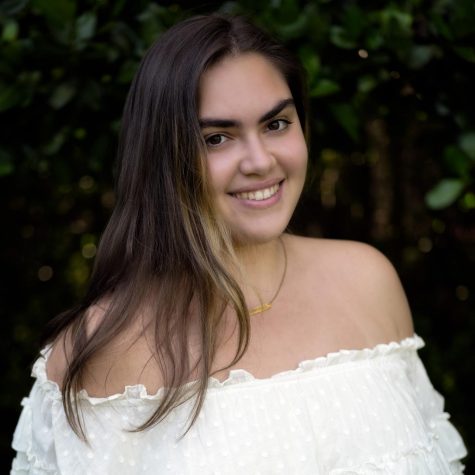
Katya Sucher '22 is a staff writer and social media editor for The Catalyst. She covers the Ransom Everglades community.


